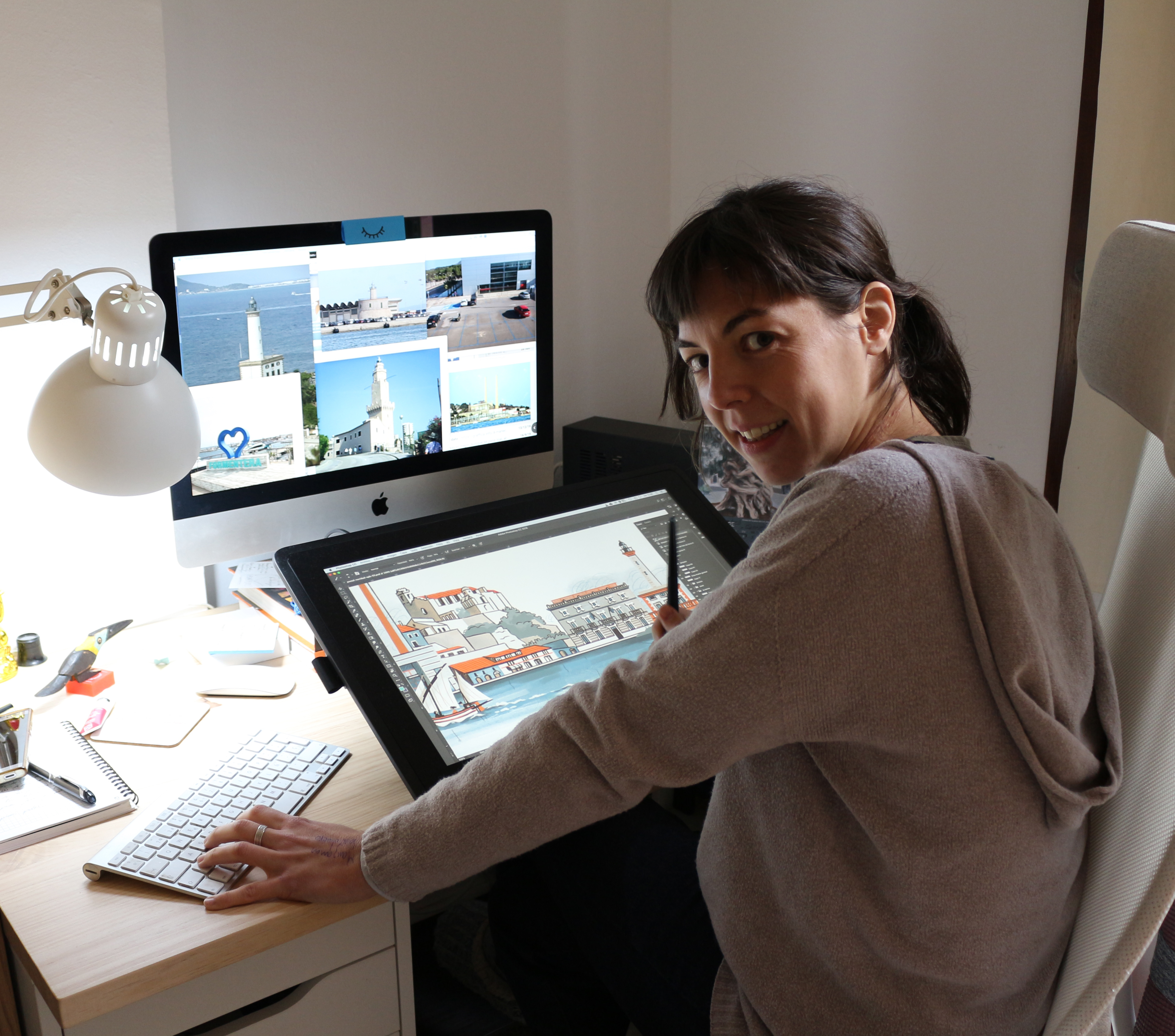
Flavia Gargiulo: “It was very easy to visualise the buildings and monuments I like best in the five ports”
Flavia Gargiulo lives in Majorca, and studied History of Art at the UIB and illustration at the Escola d'Art i Superior de Disseny de les Illes Balears.
Palma
15/12/2020
Flavia Gargiulo lives in Majorca, and studied History of Art at the UIB and illustration at the Escola d'Art i Superior de Disseny de les Illes Balears. Her career focused mainly on editorial illustration, for children and adults, advertising and animation funds. All these branches allowed her to develop a narrative style, strongly influenced by the love of details, of small stories and real and imaginary perspectives.
How does an art historian end up in illustration?
I don’t have a degree in History of Art. I attended part of the degree but didn’t graduate. I left it long before that because in a practical class I discovered that I really liked painting and doing things with my hands, more than studying the work of others. Although I don’t think the subjects are so unrelated. The illustrator needs to have a lot of cultural background to find the solutions required for each project. After all, image is a language with very old codes that must be understood.
Your work clearly shows that illustration isn’t just for children.
That's right, our work focuses first of all on children's illustration, but it can also be found in any field and for any audience. It is now a very good time for illustration due to the importance of image in our society, so our works range from the illustration of children's books to scientific dissemination, mural painting, any form of advertising, etc. The possibilities are huge.
How did you propose the order of the APB Christmas postcard? What did you notice about each port?
Sometimes there is luck and good feeling about an assignment. This is one of these. Raimond told me that, for a while now, he has wanted to try a "skyline" profile that would connect the 5 ports of the APB and since he was also in the coordination team of an illustrated book that we are also preparing for the APB, it was very easy to visualize the buildings and monuments that I had liked the most while compiling the book. Raimond also passed on his preferences to me and… voilà! I looked for a very limited and unrealistic colour range to try and create an image that looked as if all those buildings were in the same place.
Detail is important...
For better and for worse. Too much attention to detail is like too much salt, but just the right amount gives you a lot of information and it is up to you to choose. I think the use of details says a lot about the illustrator.
You have another pending project, a children's book that shows the activity in our ports and how important it is. What can you tell us about this assignment?
It was one of the important projects we completed this year. Next year will see the light in print, if all goes well. And we must say that this project involved immersion in another world from which we were totally alien. We have had to learn a lot and it has been very interesting. It has also been tiring, but all long projects are. Especially from one of my roles: coordination. Luckily we did it as a team! With Port Authority: Raimond, Alfonsa and Ricardo. And with the Cluster de Còmic i Nous Mèdia group: Juan Roig is the graphic designer whom we help to coordinate the content, the design and the team of illustrators: Álex Fito, Harold Canizales, Jaume Balaguer, Francisco Linhart and me too. In short, it has been a choral work.
We refer to it briefly as a comic, but it’s a children's book that explains ports of general interest, which includes comics, computer graphics, illustrated maps and many descriptive illustrations of ports and related topics such as fauna and flora of ports, what ports are for, a very detailed section on lighthouses, a cross-sectional view of a ferry, etc. And that’s all we’ll reveal for now.
During this time you have been able to enter the port world. What has surprised you the most?
I have always been struck by how things work and the groups of people behind this. And the port, which was a great unknown for me, has impressed me a lot with its clockwork performance, its choreography. Well, I was also very surprised by the amount of things constituting a port, such as those of general interest.






